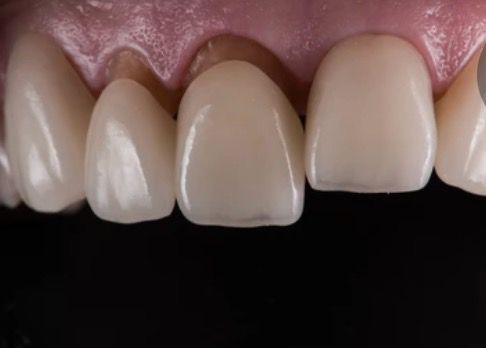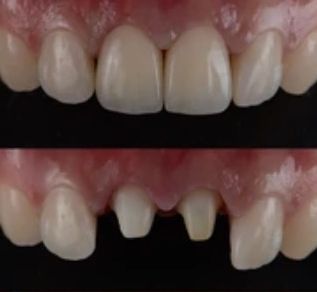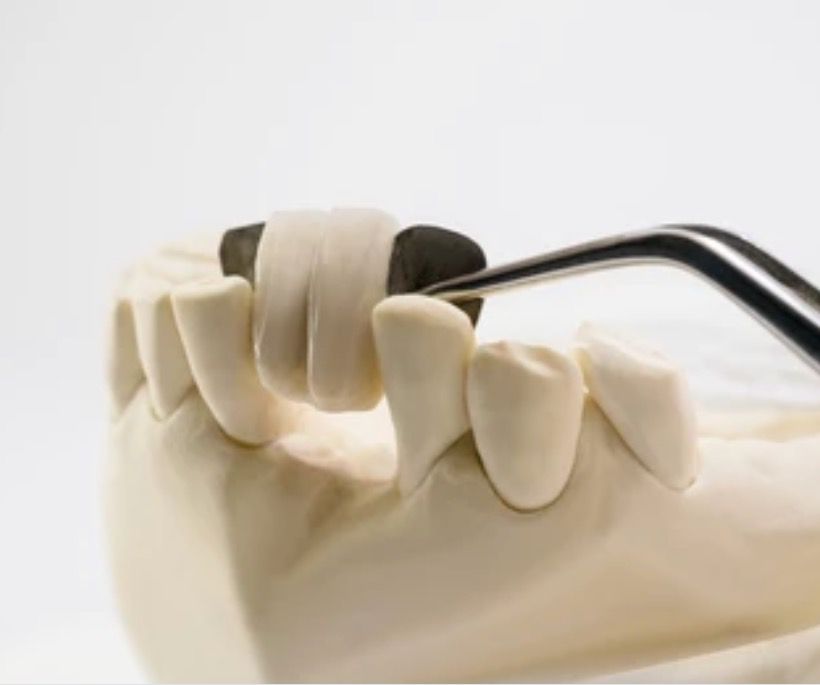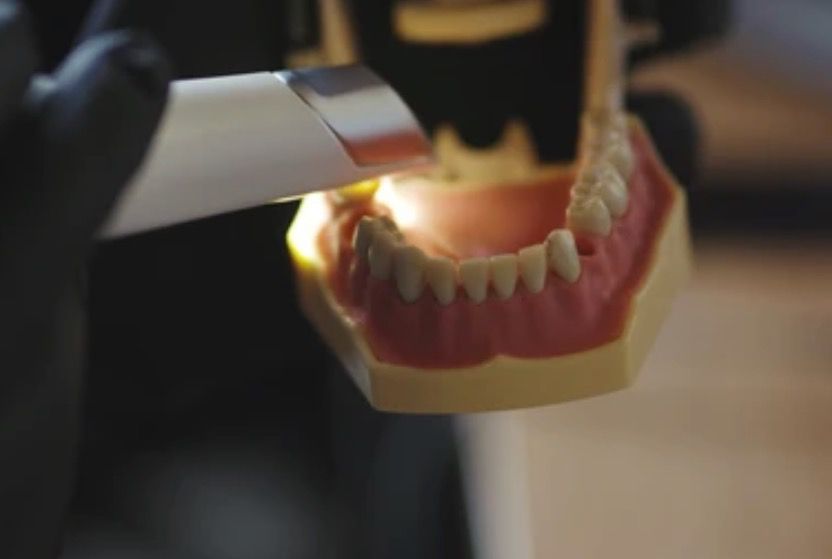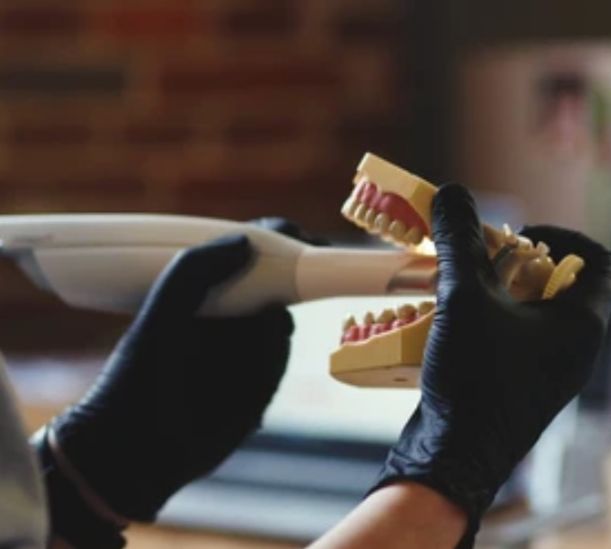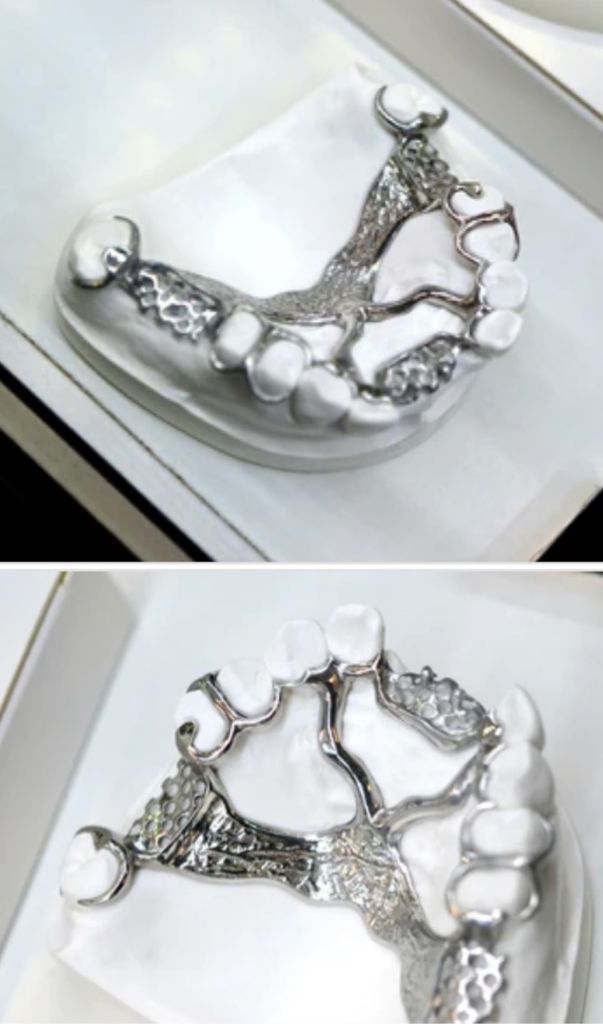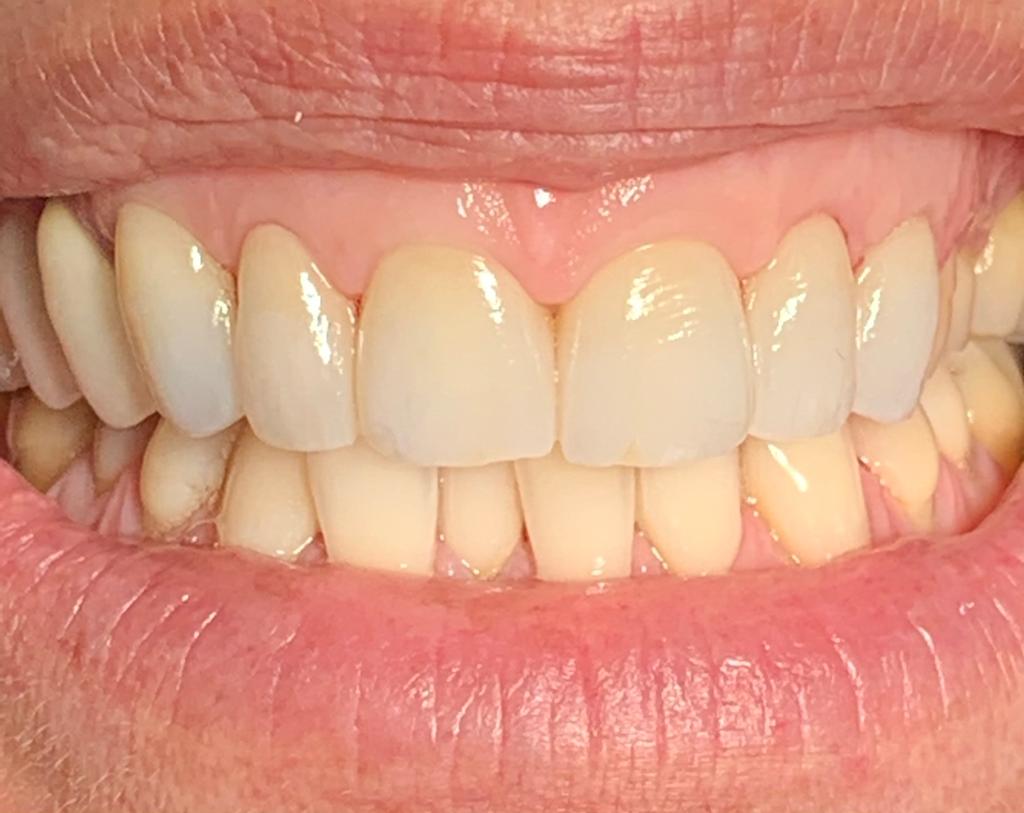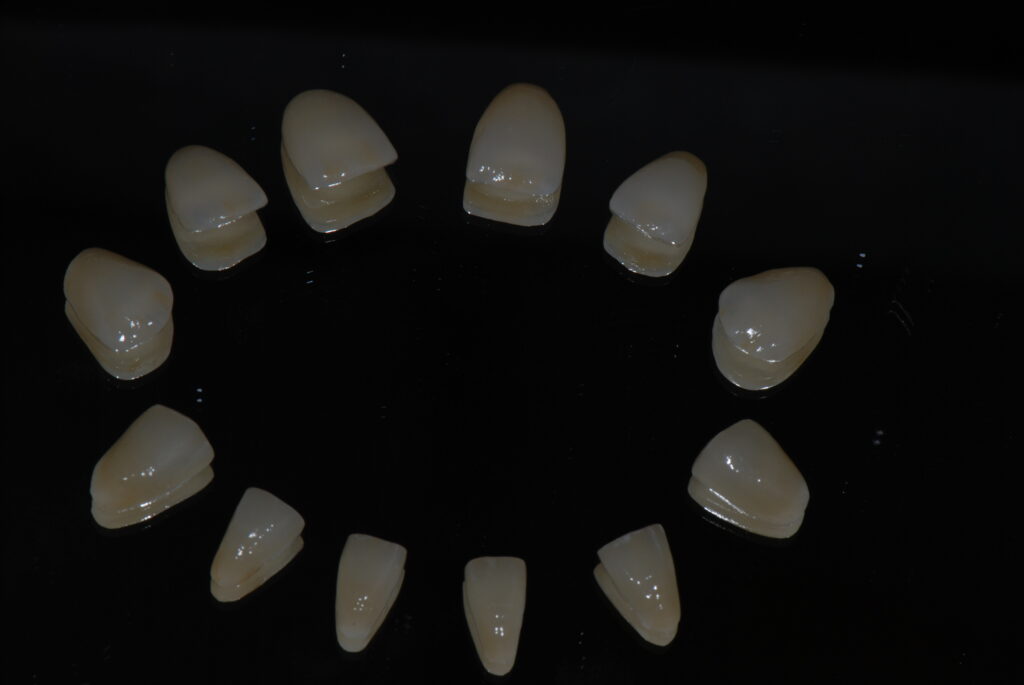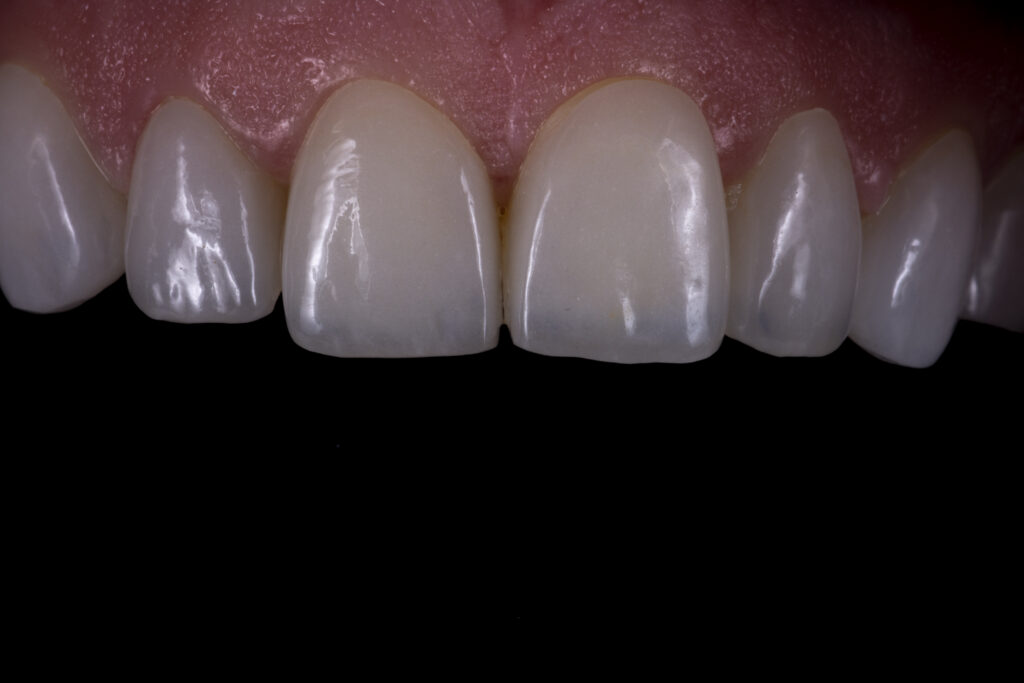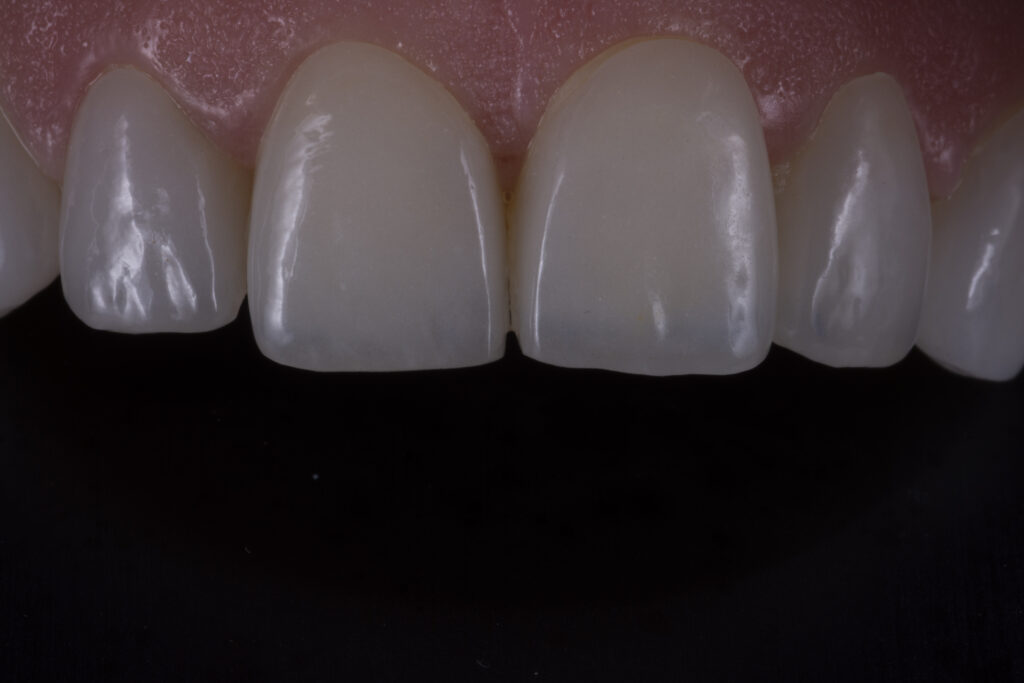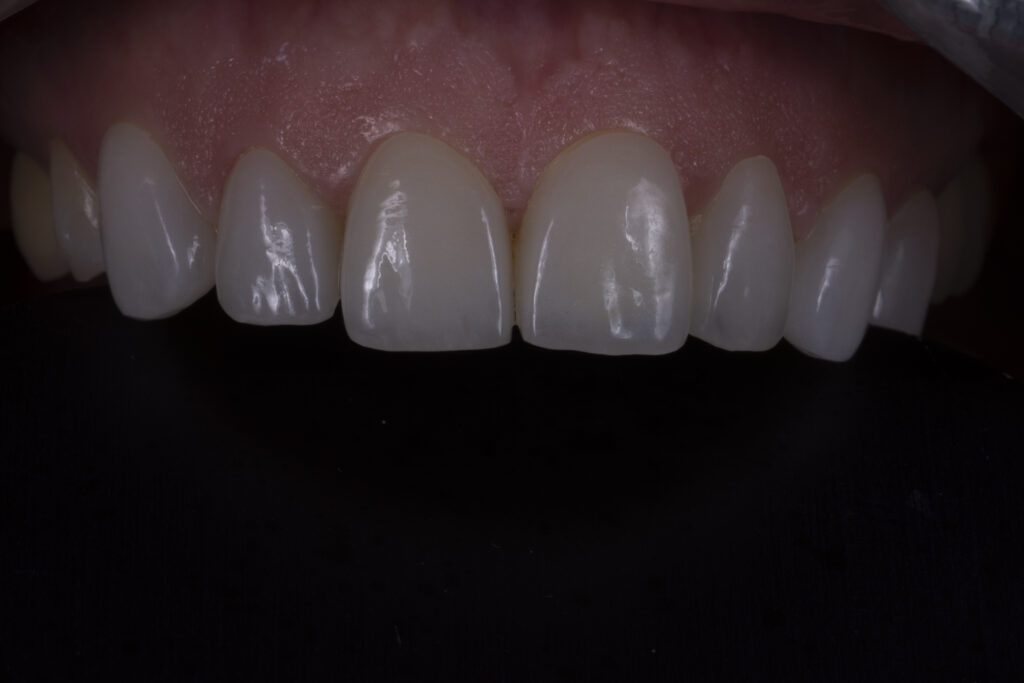Dental prosthesis is the branch of dentistry that deals with the treatment of patients suffering from the lack of one or more dental elements and with problems in the adjacent tissues. The fixed prosthesis can be built on bone implants and natural teeth. The materials used are many and vary according to the case: resin, metal- resin, metal-ceramic, all-ceramic. The prosthetic product must be adequately integrated from a biological point of view, respecting both the gingival tissues and the pulp organ during the phases of dental preparation, impression taking, positioning of the provisional and cementing the restorations. The loss of dental elements or the lack of reliability of the existing natural elements leads the clinician and the patient to choose prosthetic solutions anchored to osseointegrated implants, which can effectively replace the missing elements. In any prosthetic rehabilitation, whether limited to a sector of the oral cavity or extended to the whole mouth, a periodic and scrupulous monitoring of the rehabilitation performed, as well as a careful and systematic control of the oral hygiene of the patient.
Cause of missing a tooth:
- the dental element to the extract because it was heavily attacked by caries which resulted in a pulpitis that was not treated in time and the patient decided to replace it with a bridge;
- due to traumatic fracture (accident) not only of the crown but also of the tooth root;
- major dental abscess;
- old age;
- severe periodontitis which caused the instability of the dental element that the dentist had to extract.
Why replace the missing tooth?
- To restore correct chewing;
- to prevent the displacement of adjacent teeth causing malocclusion;
- to restore the aesthetics of the patient who would feel uncomfortable in his social relationships;
- in the case of dental implants, it contributes to considerably delaying the regression of the bone.
Dental crowns
Dental crowns are fixed prostheses made of various materials:
- ceramic (pure porcelain);
- zirconium;
- metal-ceramic (ceramic alloy);
- metal resin;
- metal;
- resin (usually they are temporary crowns).
When are dental crowns recommended?
- When teeth are affected by caries, they are chipped or broken and cannot be reconstructed with fillings;
- when the teeth are devitalized, because after devitalization they become weak and can be damaged;
- when the teeth are affected by diseases that are destroying their enamel;
- when we must cover a plant.
Modern crowns replace the old metal crowns which have the biggest disadvantage is the lack of translucency at the gingival level, since the rays of incident light, unlike the natural tooth, are blocked by the presence of the underlying metal and this, even in well-rounded crowns. performed, causes frequent imperfections. Furthermore, the capsule-tooth finishing area consists of a metal cord, often covered with an opaque material, which shines through the gum, ruining the naturalness of the smile. These problems, associated with the ever increasing aesthetic needs of our age, have led to the production of full ceramic or zirconium crowns, which have allowed us to obtain excellent results precisely because, without a metal core, they reproduce the transparency of the natural tooth.
The treatment
Before proceeding with encapsulation, the tooth is prepared. Tooth preparation includes the following steps:
- when required, the tooth is devitalized, to avoid suffering and pain;
- then the tooth is smoothed, until the thickness necessary for encapsulation is obtained (obviously the part of the tooth removed will be the thickness of the crown to be mounted);
- take the impression, choose the color and proceed with the preparation of the artificial crown;
- the last step would be the cementation of the final dental crown (if a temporary crown has been applied in the meantime). The crown can be cemented with a specific dental cement which also acts as a sealant to hold the crown firmly and firmly.
The treatment is painless. The crown will be made to be the same as the other teeth and the color tone of the neighboring teeth will be used to make the crown fit as naturally as possible between the other teeth. A temporary crown, usually made of plastic material, will be mounted on the prepared tooth waiting for the final crown to be ready. These temporaries may be less natural than the final crown and therefore will be more noticeable, but we must remember that they are made to last only a few weeks.
Bridges
The dental bridge is a fixed prosthesis that is used to replace one or more teeth that are missing for different reasons. To restore optimal chewing function and aesthetics, dentistry offers two solutions:
- bridge supported by adjacent teeth that act as pillars;
- crown on osteo-integrated dental implant that acts as an artificial root, on which to secure a prosthetic crown.
It is up to the dentist to evaluate the case and describe to the patient the advantages and disadvantages of the two dental procedures. Unlike the implant, which involves inserting a screw into the gum bone with an artificial tooth on it, the bridge is a rootless artificial tooth that is placed directly on the gum where the natural tooth was once present. The dentist then anchors it to the adjacent teeth.
What is the procedure for applying a dental bridge?
During the first visit, the abutment teeth are prepared. The preparation involves recontouring these teeth by removing a portion of the enamel to make room for a crown above them. Subsequently, the impression of the teeth is taken which serves as a model, from which the bridge, intermediate element, and the crowns will be created by a dental laboratory. The provisional is then made, able to immediately give comfort and protection to the exposed teeth and gums, while the preparation of the definitive bridge is in progress. The provisional also allows to model and condition the gingival shape and to preview the result: the final work is in fact a copy of the provisional. Subsequently, a precision impression will be taken which will be delivered to the dental technician to carry out all the necessary aesthetic and functional tests. The bridge can then be cemented.
Multiple visits can be made to check the adaptation of the metal structure and especially the bite. We remind you that dental bridges require scrupulous home hygiene. To avoid periodontal disease and tooth decay, careful brushing of the gum edges and the space under the bridge are indispensable; moreover, the area where the bridge is positioned must also be cleaned through the passage of a specific dental floss – superfluoss – to prevent food residues from triggering infections, abscesses, inflammation, or any pathological process.
Inlays
The inlays have taken the place of the old amalgams, or gray dental fillings, the so- called plumbings, which in addition to having a very ugly aesthetic impact, contain 50% mercury, one gram of which is sufficient to contaminate 20,000 kg of food (legislation in force EEC). The danger of old dental amalgams consists essentially in chronic exposure to low levels of mercury and affects, according to recent epidemiological studies, the brain, thyroid, bone marrow, kidneys, liver, heart and other tissues. The inlays are in fact composite or ceramic fillings, performed in the laboratory, which are then cemented into the cavity of the previously prepared tooth. They are used for the posterior premolar and molar teeth, where it is easier for the cavities to be large. The tooth is prepared as for a filling which, instead of being performed by the dentist, is performed by the dental laboratory on a precision impression. The inlay is then cemented. Today, the use of composite and all-ceramic inlays represents the opportunity to limit the invasiveness of the restorative methods, keeping the margins of the restoration outside the gingival sulcus and effectively restoring the biomechanical characteristics of the treated elements. The inlays have a very high aesthetic yield, last over time and the contact point between the inlay and the tooth is more precise than normal filling.
